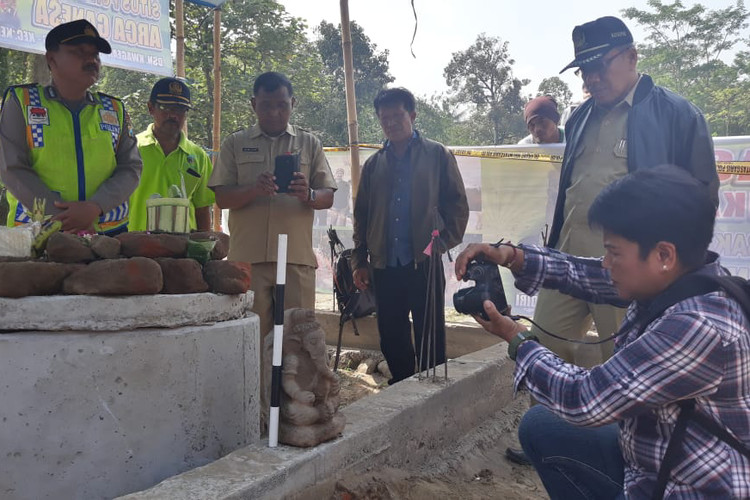Popular Reads
Top Results
Can't find what you're looking for?
View all search resultsPopular Reads
Top Results
Can't find what you're looking for?
View all search resultsExperts believe recently found statue in Kediri from 12th century
Experts, however, believe the Ganesha statue was not part of a larger compound.
Change text size
Gift Premium Articles
to Anyone
E
xperts from the Trowulan Heritage Conservation Agency (BPCB) has estimated that an object recently found in Kediri belonged to the Kediri Palace during the 12th century.
The head of the Museum and Artifact Unit in the Kediri Culture and Tourism Agency, Eko Priatno, said that the team came up with the estimation after seeing an impression of a skull and a crescent on the statue’s head.
“We have determined that the Ganesha statue that we found was from the 12th century, during the Kediri Palace era,” Eko said as quoted by kompas.com on Wednesday.
A resident of Krenceng village accidentally dug up the statue of Ganesha, a Hindu god who has the head of an elephant, when he was installing a septic tank by his house on June 15.
The resident, who was identified as Nur Syamsu, immediately reported his finding to the village chief.
Nur Syamsu had already allowed the conservation agency to undertake further excavations on his land, but the staff did not find any other relics in the area.
“It is safe to conclude that the Ganesha statue here is not a part of [a collection of] other statues, so we don’t need another excavation,” Eko said, adding that the BPCB has allowed Nur Syamsu to continue installing a septic tank in his backyard.
According to Eko, the statue is to be transferred to a government-owned cultural museum.
“We will take care of the legal issues,” he said. (dpk)










